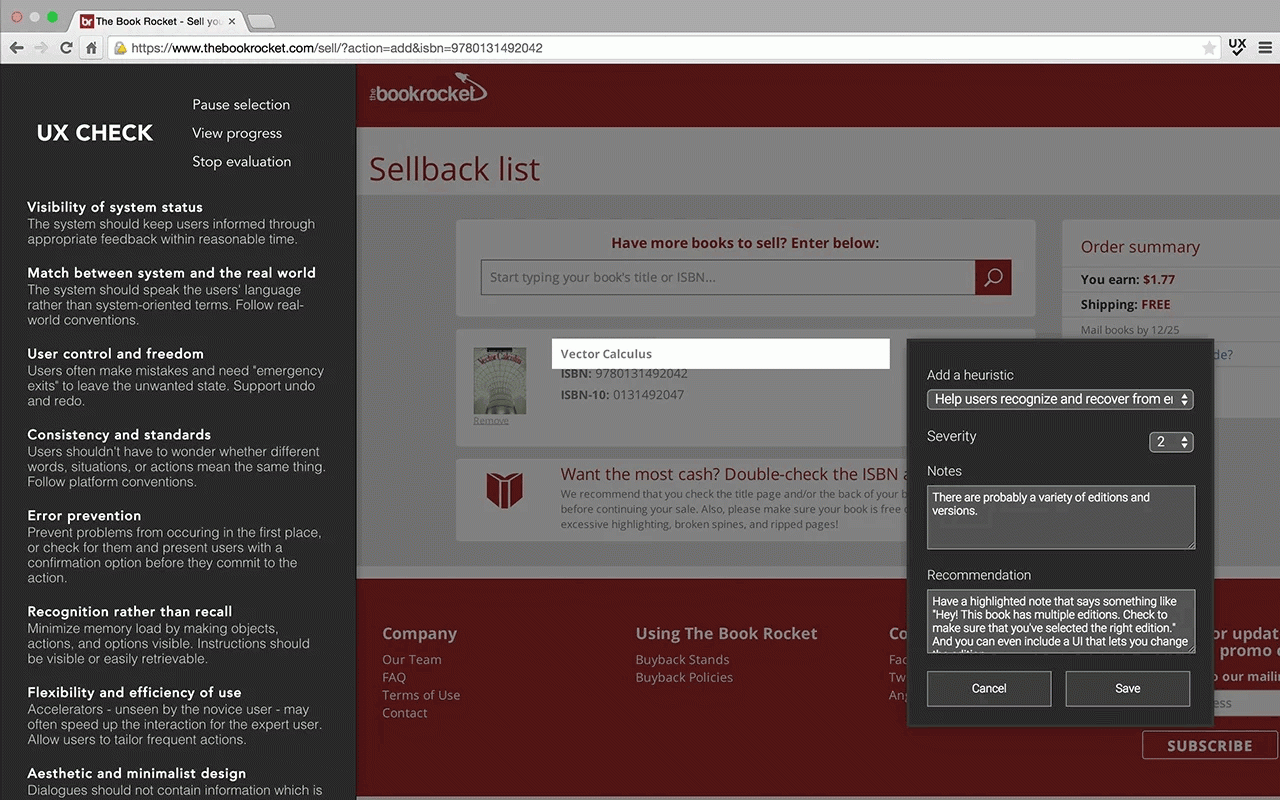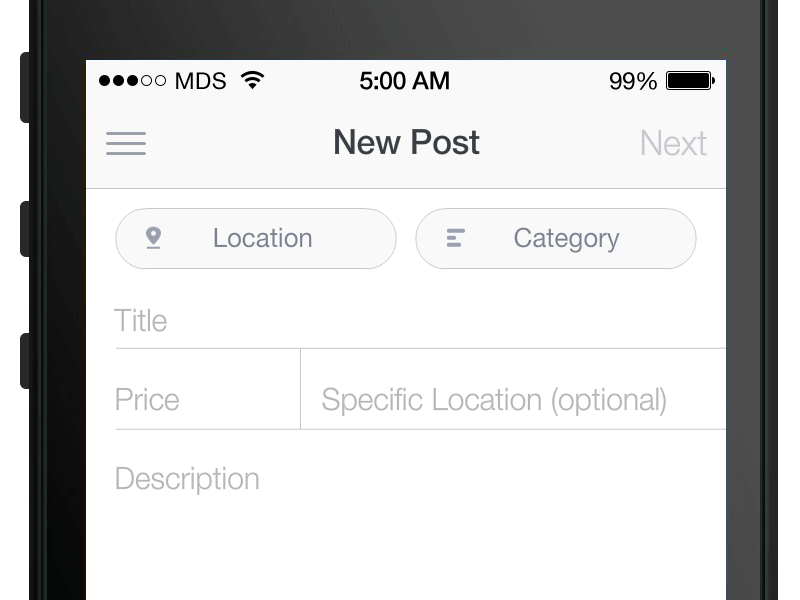UX Magazine has a good overview that I found helpful of best practices for designing autosuggest experiences. Includes helpful examples and puts vocabulary around things like scoping, autocomplete vs autosuggest, and types of suggestions themselves.
Dropdowns Should be the UI of Last Resort
Some great details and examples from Luke W. of optimizing web forms for mobile entry. Main focus of this article is that standard dropdowns should be the UI of last resort. Going with a mobile-optimized option like a toggle, steppers, or custom solution can simplify mobile forms and improve conversation rates.
UX Check Google Chrome extension
Interesting tool. UX Check is a Chrome Extension that helps you identify usability issues through a heuristic evaluation.
A better infinite scroll?
Google has a new blog post up with their recommendations for implementing infinite scrolling. Also be sure to check out the demo page.
Google’s tips and examples address SEO concerns with this feature, but don’t really address the possible user experience issues it introduces. As someone who is lucky enough to observe and work with actual users during usability testing, I’m not sure there is such a thing as a “good” infinite scrolling technique right now.
At least with this example the back button works as expected but I’m still not sure the positives outweigh the confusion infinite scrolling always seems to introduce. As with pretty much every UX issue, this of course depends depends on your audience and content. Like any other feature, get it in front of real users and test, test, test.
Awesome mobile UX idea for floating form labels
Awesome mobile UX idea for floating form labels from Dribbble. Example code is also up on Github.
Accessibility expert warns: stop using carousels
Should you use a carousel on your website? No. Why not? Because testing shows they don’t actually work.
Three (Somewhat) Easy & (Really) Important Ways to Improve Your Site with jQuery
Web developers have been using JavaScript to layer on enhanced user interfaces and add dynamic content since the days of Netscape Navigator’s dominance. Today JavaScript can be used to build huge advanced web applications but it still remains a valuable tool we use daily to add progressive enhancements that can make the difference between a good site and a great one.
The jQuery JavaScript Library helps make many common tasks easier and gives developers a powerful toolset to handle page events, animations, and more. Complicated, common tasks go from 100 line endeavors to single lines of code. The vast list of available plugins available can add even more capabilities.
Using the jQuery library and leveraging reusable logic makes adding some basic usability and interaction features a no brainer on most projects. Relatively easily we can make important tweaks that improve the overall user experience of your site.
Don’t Obfuscate URLs on Your Website
Link shorteners have been around for years but their common use has exploded due to Twitter and it’s 140 character limit. Unfortunately, more and more content editors and bloggers have begun using them on their websites as well.
Sure, nobody likes a 200 character long, unintelligible URL. Your website visitors like being surprised by where they end up after clicking a link even less.
Providing your site visitors with information on the domain and page a link will take them to is a critical user experience best practice. The more they know about what they’re about to click on the more likely they are to actually click the link. Which link to this blog’s Twitter archives shown below are you more likely to click on?
Full length: https://www.brianbehrend.com/tag/twitter/
Shortened: http://bit.ly/ePBm1U
The full path of a link informs the visitor about the destination domain and page name, along with some basic info about where the page is within the site and what type of file they’re about to load. The only thing worse than using shortened links on your website would be using a shortened link to surprise a visitor with a 65 megabyte PDF that crashes their browser.
Tiny URLs have their place, but it’s not on your website.
Trending: The Luxury Treatment, Expanding Your Brand Through Social Media, Advanced Search, and More
Some scattershooting this week covering online marketing, social media branding, and the usability of advanced search. Read on to learn a little more about what I’ve been paying attention to recently.
The Luxury Treatment
eMarketer: Giving Affluents the Luxury Treatment Online
Luxury Daily: Why luxury automakers increasingly rely on iPad’s large canvas for engagement
A pair of articles on marketing to and serving affluent customers online covering web experience expectations, iPad apps, and luxury brands using (or not using) Twitter. Luxury brick and mortar stores offer intimacy and elegant product presentations and customers expect a comparable experience online. It is important that if you sell high end products or cater to a high end audience that your online presence creates an engaging experience as well.




